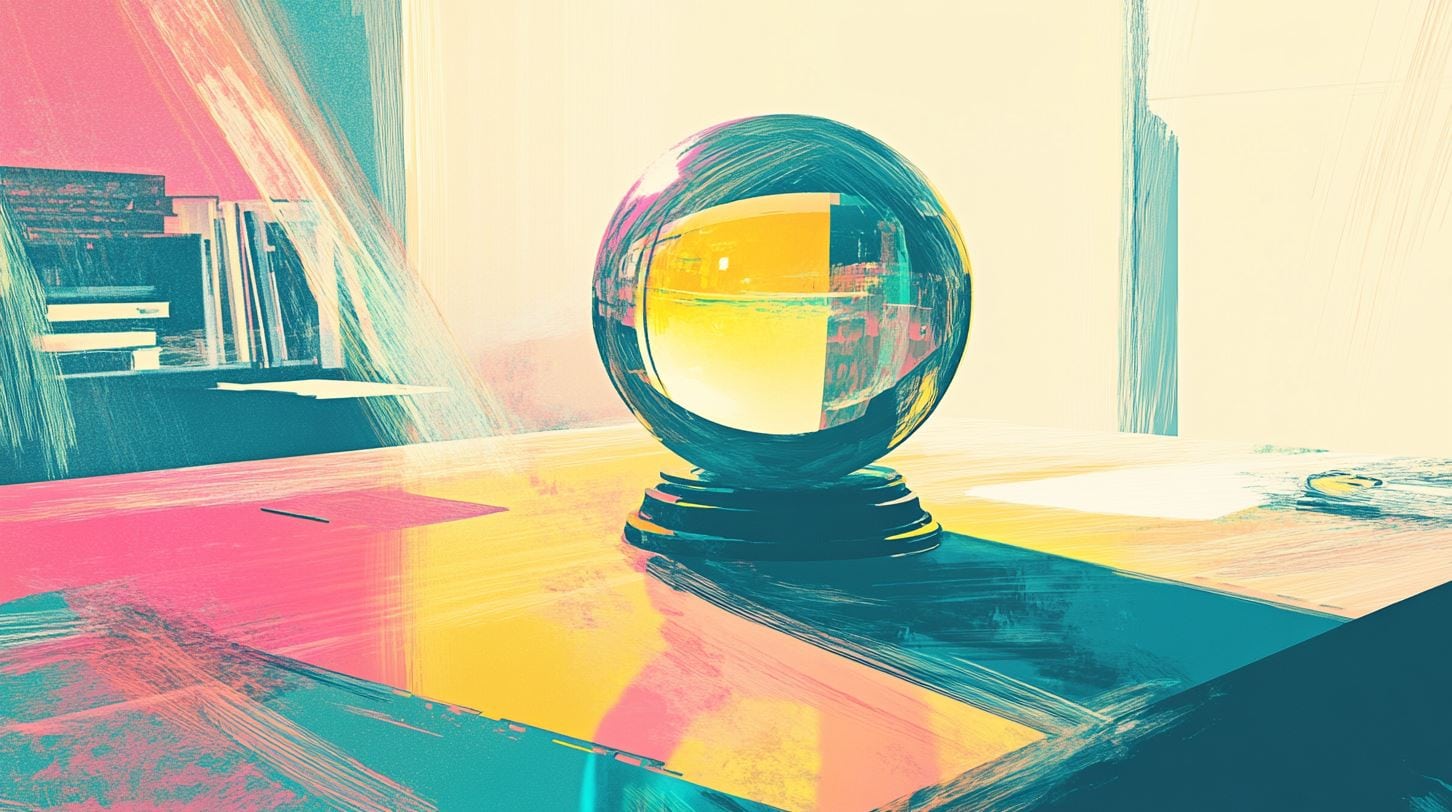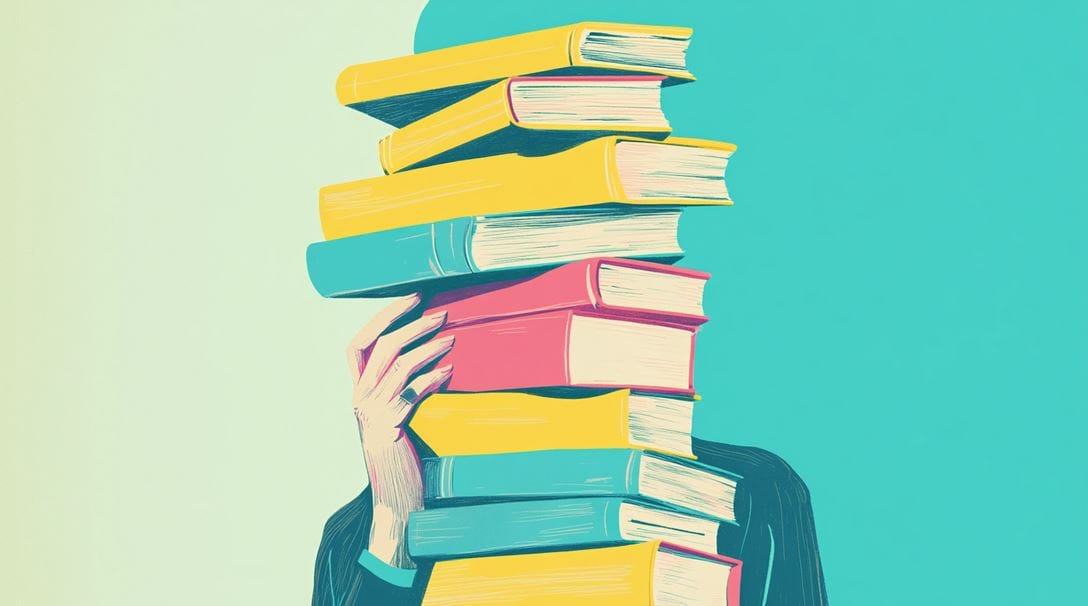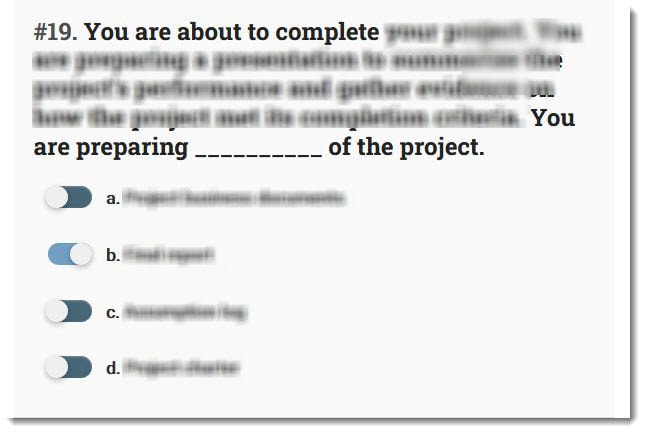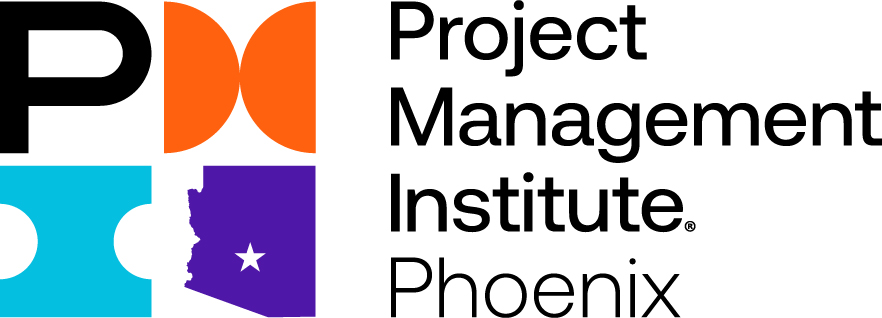Rebles Guide to PM
-
Coursera Plus: Why it’s worth it in 2026

As a project manager, we are always learning new things. If you hold a professional certification like the Project Management Professional, an APM qualification, or PRINCE2, you’ll also be expected to carry out some professional development each year as well.
And that all costs money – often money that our employers won’t pay for us. There is another way to build your skills and manage your budget: Coursera Plus.
What is Coursera Plus?
Coursera Plus is Coursera’s subscription plan.
Coursera is a global online learning platform that has training material on a wide range of business-related topics. Think of it as an alternative to LinkedIn Learning, with content from world-class universities and tutors.
The Plus membership opens the doors to all of those online courses – there are thousands of courses.
There is a monthly or annual payment option. There is also a free trial, so you can check out what is included in the Plus program and make sure that you are comfortable committing to a subscription.
So what do you get for your money?

What’s included in Coursera Plus
It gives you access to 7,000+ courses and specializations (which are a collection of courses that lead to a certificate) with one monthly or annual subscription.
Over 90% of the courses on the platform are available with the Plus subscription.
You have unlimited access to the training from 170+ leading companies and universities. And you can earn certificates for all of them (there might be a few that don’t offer certificates – everything I looked at did, and Coursera advertises that you can earn unlimited certificates).
There are more than 15 Professional Certificate programs (including all the courses from
Google ) available too, but degrees and some other classes are excluded from the subscription plans.How much is Coursera Plus
The cost of Coursera Plus in the UK is £43 per month or £294 per year (or the equivalent in your currency), which represents a saving on the monthly version. The annual plan would be my recommendation if you know you want to commit to a year.
Alternatively, if you browse around and only want to buy one course, it might be cheaper to skip Coursera Plus and just go with paying for that course or specialization as a one-off. Courses range from £40-65 per month, with many programs being able to be completed in a month if you really go for it.
Check the pricing in your country, but it is going to be similar.
Benefits of Coursera Plus
Here are 7 benefits of Coursera Plus, based on my experience using the platform for professional development.
1. Study anything
Want a course on work breakdown structures?
Agile methods? How to give presentations? Coursera has all of those and much more.Does Coursera Plus include all courses?
No, it does not. The subscription excludes online degree courses and training from some partners such as Stanford University. But with around 90% of the content available to Plus members, you will be sure to find a course to help you progress. As of April 2024, IBM Project Management is now included in Coursera Plus.
Use the search filters to find the right kind of courses for you. I quickly found what I was looking for once I filtered out certain providers and languages.
2. Cost-effective learning
Coursera has a free option, but the content is limited. For example, while you can audit the Google Project Management Certificate (auditing a course means you can see the materials), you can’t take the assessments or do the peer reviews without a subscription.
Having said that, using the auditing feature was how I managed to get through so much of the
Google Project Management certificate without having to pay for many months of access.If you are planning on doing a few courses during a 12-month period then the Plus option gives you access to loads of quality learning materials without having to pay extra.
[lasso id="35054" link_id="292373" ref="coursera-pm"]3. Fits with your schedule
How many of us have the time to put aside a week for a classroom course? I can hardly believe that’s what I used to do. I can’t imagine it now: flexible learning is the way to go.
The good thing about online learning is that you can fit it around your day job.
For example, I listened to some
Agile training while I was going about my other tasks. I downloaded the Coursera app and had that on my iPad, so I could watch the videos while I was cleaning my teeth and …er… doing other bathroom things, and I also had the videos on while cooking dinner.I managed to get through a lot of the content without having to ‘sit and learn.’ Note: don’t do this if you feel like you learn best if you take a lot of notes. I would never have got the potatoes peeled if I had to stop and jot down notes all the time.
4. Earn certificates
The main reason I signed up for Coursera is because I wanted certificates.
Does Coursera Plus include certificates?
Yes, it absolutely does!
Is it worth paying for Coursera certificates?
I think so, but you do have to acknowledge that they aren’t ‘worth’ as much as, say, a degree or a professional certification like the Project Management Professional (PMP)® that also recognizes your experience in the field and has certain eligibility criteria and a proctored exam.
I am a bit of a learning snob: I’m happy to learn stuff for the sake of it, but I am more motivated to learn when there is something at the end of it, like a Credly badge or a completion certificate that I can share on LinkedIn.

5. Respected by employers
Coursera is the platform that the training is hosted on. The training is delivered by world-class universities and training providers. For example, I did a course from IBM. I’ve also taken courses from
Google .Loads of universities have made their individual courses available on the platform, so if you are asking yourself if Coursera is respected by employers, I would say yes.
You can probably find some courses on there from establishments that don’t carry the same kudos as a prestigious university, but employers will trust the development you’ve gained from leading educational establishments.
6. High quality content
The quality of the video learning materials does depend on the provider, but the courses I have taken have been well-put together and taught by experts.
These are professionally-shot videos and professor-level instructors. It’s a high-quality learning experience, so you can guarantee that you are getting expert tuition.
Use your common sense, though. Choose providers who have 'name recognition' for their brands, universities and courses with lots of top star reviews. The Coursera platform does have 'quality' features built in like transcripts, note-taking, reminders etc but the quality of slides, videos and the presenters' delivery is going to be down to the individual providers themselves.
7. Totally worth it!
I can say that personally, I’ve gained confidence in
Agile methods through the learning I have done on the platform. While I don’t work with a Scrum team on a daily basis, I do interact with Scrum Masters and Product Owners regularly, and it helps to know more about their world.Is Coursera Plus worth it? 87% of learners on Coursera report career benefits, so yes, it is. As long as you use it.
Pros of Coursera Plus
Lovely user interface that keeps you motivated to complete the training. The design is good, it’s easy to use, and key dates are highlighted so you remember what you are supposed to be doing next. It steps you through the training, making it difficult to fail to complete the course.
Offline option.You can download the videos and transcripts to watch them when you are offline.
Easy to understand pricing.The pricing for Coursera in general is confusing. I couldn’t find out how much a course was until I’d enrolled in the free trial, and they do make it hard to know how much it will cost to take a whole certificate as the price is often based on monthly subscriptions (for professional certificates and Coursera specializations, for example). But the Plus pricing is easy to understand: it’s one price per month for everything, or a one-off annual fee.
14-day guarantee.If you pay for the premium subscription plan and get the annual option, you have 14 days to check it out. Do use this time, as if the subscription service isn’t for you, this is your moment to cancel it.
Forums. One thing I have enjoyed about the courses I’ve taken is the option to participate in forums. There are thousands of students online (and plenty of social proof about what it means for their careers), and the majority are willing to chat in the forum. That makes learning a social experience, even though you are at home.
Tip
Networking in the Coursera Forums can be very helpful to share experiences, networking, and get advice from other project managers.
Cons of Coursera Plus
Many beginner courses. Most of the courses I looked at were aimed at beginners. You’ll have to dig to find content aimed at career professionals with more experience. There’s nothing wrong with going over the basics, but if you have been doing a job for a while, try to seek out the modules that will help you the most to save time.
Time commitment.You’ll get the most out of Coursera Plus if you do two courses in a year, or some learning every month. That is a commitment. Go for a monthly subscription if you aren’t sure you can keep that level of learning up for a whole year.
Might have additional costs. Check what Coursera courses are included in the Plus subscription before you sign up, as if the one you want to do is not, you might incur additional costs.

Other considerations before you sign up
There are a few other niggles I had with it. For example, they constantly talk about earning a ‘shareable certificate’. All that means is you can directly share the image of your certificate to LinkedIn, and it includes a link back to verify your achievement on their platform if an employer wanted to check out that you had actually earned it.
All certificates are ‘shareable’ – I could photocopy a certificate and send it to you. It feels a bit ‘social media’ but I get the sentiment, and these days when you could mock up something in Canva it is good to have the validation of a link back for evidence.
Know your goals
Finally, it’s really important to have some idea of your career goals before you sign up. Is it worth your time to learn about data analytics (spoiler: yes!)? Should you focus on Excel for Business? What about social sciences, leadership, financial accounting…?
You could go down the Coursera rabbit hole and end up studying a wide range of topics that will have no impact on your career prospects at all, so go in with a game plan!
My top 10 recommended courses on Coursera will give you a good starting point.
Are you ready to check it out yourself? Sign up for a free 7-day trial and have a look around. I’ll see you there!
[lasso id="35055" link_id="292374" ref="coursera"]This article first appeared on Rebel's Guide to Project Management and can be read here: Coursera Plus: Why it’s worth it in 2026
-
What’s The Future of Project Management in 2026 and beyond?

What is the future of project management? Let’s look ahead and see what the next 10 years will bring for project management software, jobs, and the role itself.
Does project management have a future?
If you're asking yourself if project management has a future, then I think you might be asking the wrong question! The question is: what kind of future is it going to be for project professionals?
The project management role isn't going anywhere. The World Economic Forum's Future of Jobs report 2025 says that project managers are among the job categories driving the most net job growth.
Project management is a key role for business transformation and the forecast is for significant growth. This has been the same since I started following the WEF reports in 2023, and there's no signs of that stopping any time soon. If you're in Greece or Romania, the outlook's even better!
More and more knowledge work being run in a projectized way, which means more and more people doing project management as part of their day job.
So will we need ‘professional’ project managers in the future? People who just do managing projects?
We will. There will always be complex and complicated projects that need a steady hand and a particular set of skills to bring to a successful delivery.
As the business environment gets more and more global, digitalized, uncertain and fast, companies need to quickly adapt and bring services and products to market. Project managers are the people who can make that happen.

Future of project management: Jobs
PMI says that by 2027 employers will need nearly 88 million people in project-related roles. The global demand for project managers is increasing.
That's a stat widely used in the past few years, but job ads and the market, and my mentoring clients, and other research... it's all pointing in the same direction.
The role of the project manager has long been shifting away from someone who can tick off tasks as complete on a Gantt chart and towards a strategic leadership position for effecting change in an organization.
Project managers still provide an irreplaceably human combination of leadership, integration of specialists, and ethical behaviour.
~ Arup, Future of Project Management report
We are a long way from the death of project management.
Hybrid project management (or how we always did it)
One of the project management trends we are seeing is the acceptance that a tailored approach is the way forward. In other words, we don't need to label it as hybrid project management, 'wagile' or 'agifall' or flexible project management or anything else.
Tailoring the approach that you use is professional judgement and is what project managers have done for ages. It’s certainly something I’ve used: for example ongoing iterations for development with significant customer involvement in the deliverables at all stages, but managed within a waterfall governance structure and life cycle.
Frankly, hybrid isn’t new. We don't need to call it anything specific to know that tailoring an approach to best fit the needs of the project is good thing.
Having said that, the perceived rise of hybrid project management is good news because:
- Projects are more complex than ever
- They involve many more individuals: more than could comfortably fit in a multi-skilled Scrum team
- Most large organizations aren’t geared up to run their whole operation in an
agile way.
The future of project management needs to be more
agile . According to research by IPMA, only 47% of organizations are using agile approaches for delivery.And we wonder why we can’t respond to change fast enough.
The future is flexible
The way we run projects has been evolving since we started out formalizing how work gets done in a project setting.
As our environment gets more complex, uncertain and – dare I say it, political – we’ll need more and more tools to help deliver projects in that kind of environment.
For example, project managers need to respond to:
- Stakeholders with shorter attention spans
- Stakeholders with competing demands on their time
- Complex and unknown technical situations
- Complex and unknown geopolitical and socio-political situations
- Higher staff turnover (no such thing as a job for life any more)
- Greater demands being put on management teams
- Collaborative contracting and partnering with suppliers
- Increasingly complex regulation and governance.
Project managers need options that will help them deliver. And that means being able to choose from predictive, iterative and hybrid ways of delivering the work and blending what works to get the best results.
The future of project management relies on more professional judgement and fewer textbook answers.
Project management software: The next generation
The future of project management software is interesting. I review a lot of PM software tools and there are companies now making massive leaps into integrating big data, automations, machine learning, AI and more into the way they collate, present and make it possible to use large data sets.
[lasso id="22755" link_id="300126" ref="crozdesk"]Here are some considerations for future technology – project management style.
4 themes for the future of project management software
- Artificial intelligence
- Mobile working
- Anti-workaholism
AI
AI is already a feature in some project management tools and robotic processing will help automate routine PMO tasks. According to Deloitte, 70% of organizations are exploring or using AI.
Current statistics on AI in project management show that this is a growing area and the challenge for us as project leaders is that it's important to know how to work effectively with the tools that we have available.
Tools like Tom's Planner, RAIDLOG, Nimble and enterprise software are integrating generative AI and your own project data sets to surface useful insights and save you time.
While I still remain positive about the role of the project manager, I think other jobs you routinely interact with, like system testers, could be more at risk of being automated.
The use of AI in project management tools means the human’s role is elevated into a knowledge leadership position and is freed up from doing the grunt work of tasks like system testing, taking minutes or updating logs – taking the tools already in use to a whole new level.
Project management jobs aren't going to be lost to AI, but they will change, and employers are potentially going to be choosing people who have AI skills over those who do not.
Mobile working
Devices will become more powerful, but currently we still don’t have all the functions of PM software available in most of the equivalent mobile apps. That will have to change.
We need to have access to our project management software while we're working remotely from smaller devices.
Anti-workaholism
Tools are getting smarter at helping us balance the needs of work and life, and to stop us falling into the trap of working more, just because we can.
You know those pop ups in Outlook that invite us to NOT send an email at the weekend and to schedule it for the recipient's working hours? That's what I mean.
Resource management: The Continuous Challenge
For all the talk about the future of work and how project management is going to evolve, I still think we have some challenges with how we work now.
For example, resource management and capacity planning are not things that are easy to do. I have been talking about this for years.
Project managers lack the tools to effectively manage workload across teams because the solution required relies on enterprise adoption of software. And many organizations won't/can't do that.
Make everyone do timesheets and resource planning just so project teams know who’s available to work? No thanks.
Unfortunately, unless we get strategic buy in for managing projects in a professional way, the resource planning challenge isn’t going anywhere soon.
Projects on the Board: The next professionals
Arup’s collaborative thought leadership piece into the Future of Project Management talks about every top 100 firm has a project management professional in at least one C-suite role by 2030.
Maybe this role will be a Chartered Project Manager.
If we are serious about improving project delivery and delivering strategically-aligned projects that generate business value, we need organizations to take project delivery seriously. And that means elevating the discussion beyond senior managers to the board of directors.
The Chief Project Officer role is (in my opinion) long overdue already. With executive oversight from people who actually get it, projects would have more chance of completing successfully – and fewer vanity projects would get started.
Digital skills: The next competency for project managers
Digital skills are important for the project managers of the future (and – in all honest, those of us working as PMs today).
CBI’s report into what’s required to create a world-leading innovation economy says that upskilling people with digital skills is essential. The digital skills pipeline isn’t that great at the moment and they suggest more needs to be done to encourage greater ambition in that arena.
The digital skills important to project managers are:
- Data analysis, analytics and management
- Harnessing generative AI and being a 'prompt engineer' for your own work
- Security and data protection
- Legal and regulatory compliance
- Online collaboration and leadership
- Knowledge management
- Data-driven decision making.
Add into all of that a very non-digital skill of resilience. With all this change, disruption and digital-ness, the ability to cope with the ups and downs of the job is going to be essential.

The role of project managers in the future
The future of project management is bright. There remains strong demand for people delivering change.
I believe much of the mundane stuff of being a project manager will go away eventually, as our tools tap into the advances in technology that are already out there.
PM will move from being seen by some execs as an administrative function and towards the strategic partnership that it has the potential to be in every business – not just in those enlightened firms with high levels of program management maturity.
Skills for project managers have been shifting towards the ‘soft’ stuff for years. That’s going to be even more important with the way the future of work is going.
Project managers will need to be the humans on the team. We’ll need to connect with others with the skills that you can’t get from your robot colleague:
- Empathy
- Strategic thinking
- Fun
- Creativity
- Motivation and persuasion
- Thoughtful customer service
- Listening.
Looking forward: Summary
Project management evolves to meet the needs of today’s workplace problems. We’re facing the kinds of evolution we’re seeing at work because the nature of the work itself demands it.
Efficiency is more than having the right process. It’s also having the capacity as a team – not simply as a project manager because the role is getting too big for one person to do everything – to lead increasingly complex work and solve difficult problems almost daily.
We can do it. We are doing it. And the best project managers are improving how they do it every day. Are you?

This article first appeared on Rebel's Guide to Project Management and can be read here: What’s The Future of Project Management in 2026 and beyond?
-
Best PMI-ACP Exam Prep Courses for 2026

Short on time? In my opinion, the best
PMI-ACP exam prep course is the Agile PrepCast. With that and PMI membership (to get a freePMBOK® Guide andAgile Practice Guide), you’ll be on your way to exam success.Note: The
PMI-ACP Exam changed substantively in November 2024. Check out the updated Exam Content Outline and make sure any study materials you buy are aligned to the latest edition.Are you aiming to achieve your PMI
Agile Certified Professional (PMI-ACP )®? Then you’ll be looking for a course that will give you exam confidence and fits the way you want to study.I’ve rounded up the best
PMI-ACP training courses below based on my knowledge of the industry and working with providers and students as a project manager and trainer.(Note: I’m not an
agile trainer, but I am a Fellow of the Association for Project Management and I’ve got a lot of experience reviewing training courses – and I’ve taken plenty of them myself too!)Keep reading for my analysis and reviews of the best
PMI-ACP online training that will help you earn youragile certification and pass the test on your first attempt!The courses
Agile PrepCast- Joseph Phillips
There used to be a Velociteach course offered that I liked, but this is no longer available.
I’ve prepared a summary comparison table for the study materials below, with detailed product reviews afterwards, so read on for all the info!
Comparison table
Course Agile PrepCastJoseph Phillips Rating #1 #3 Website Agile PrepCast Udemy Price $229 $149.99 Guarantee 90-day 30-day Hours of instruction 21 hours of video lessons none Approved contact hours Yes Yes Student support Email and forum none stated Access duration 1 year Lifetime Sample exam questions Yes, if you buy the Elite or Elite Plus which includes an exam simulator Yes Suitable for PMI PDUs Yes Yes Suitable for study groups? Yes Yes Alternative option: Brain Sensei
[lasso id="38607" link_id="299082" ref="pmi-acp-exam-simulator-6-months-access-brain-sensei"]What to look for in a course
If you are considering this training, you probably work on
agile projects already (you’ll need to be able to evidence youragile experience when you apply to the Project Management Institute). That might mean some of the course topics sound quite basic as you’ve already got experience in them.When you are looking for PMI
Agile Certified Practitioner Exam course, you’ll want to make sure it covers:Agile methodologiesAgile principlesAgile practicesAgile frameworks- Continuous improvement
Agile teams, team performance and stakeholder engagement.
And everything else mentioned in the Exam Content Outline which you can find on the PMI website.
In addition to covering the syllabus, look for courses that will also support you through the application process, beyond providing the contact hours certification as part of the eligibility requirements.
For example, some providers include modules on how to apply and prep mentally for the test, as well as offering practice questions and case studies to help you get into the
agile mindset required to do well on the exam.Note that none of the courses below include your exam fee. You will still need to pay for and book your exam. I recommend that you become a PMI member to get a cheaper exam fee.
1.
Agile PrepCastThe Agile PrepCast is a tried-and-tested online training course that I’ve used in the past and been impressed with. It’s a robust, engaging online course, although my personal opinion is that the slide formats and colours are dated.
I liked the real-world examples. Presented by Cornelius Fichtner, the course is straight to the point with no fluff.
This course takes the top spot for me because I can personally vouch for it. It’s a good price, it’s comprehensive, and you really will leave it understanding the world of
agile as well as how to pass the exam. You’ll feel like one of the proagile practitioners after taking this course!However, you should know that the course has not been updated since the latest changes to the
PMI-ACP exam in November 2024. The provider is (still) in the process of deciding how well the content aligns to the new syllabus and exam content outline.The current course will continue to be offered until end of February 2025 and PMI will accept the training up until the end of March. So do check back before you purchase to see if the materials have been refreshed.
Pros
It’s really comprehensive with 16 modules. You don’t need an extra study guide (beyond the required reading of the
PMBOK® Guide and theAgile Practice Guide) or to wade through all the recommendedagile reference books that PMI suggests.Other advantages include:
- There are 21 hours of video instruction (at least) so you can easily feel confident you meet the requirements.
- You get a certificate for the 21 contact hours, so no worries if your application gets audited.
- There are 3 versions depending on what you need: Basic, Elite and Elite Plus. The Basic course includes the training materials. Elite comes with four practice exams via their test simulator and Elite Plus has some study guidebooks that literally form your study plan.
- There’s a really active student online forum where you can ask and answer questions as well as learn from other people’s experiences, as students regularly come back and share their exam prep journey.
Cons
If you aren’t self-motivated, you won’t get through this training! You do have to make a study schedule and dedicate the time to getting through the content (if you upgrade to the Elite PLUS package, it comes with a week-by-week study guide).
The other thing to note is that the training is longer than strictly necessary for the exam requirements. You’ll get a full understanding of the different
agile approaches and how to apply them, but be aware other courses are shorter. You’ll have to decide if you want a comprehensive overview of the material to boost your confidence and give you real skills, or a course that might be ‘thinner’ but would still do the job.Other disadvantages are:
- There are no captions on the videos. This could be an issue if you routinely switch on subtitles, for example if you are studying in a noisy area without headphones.
- You can’t download the slides – I understand the intellectual property implications here and that the company are protecting their assets. Not being able to download the slides doesn’t matter to me. I take my own notes, which is a better learning approach for me anyway as it helps me remember.
Best for
Project managers who are motivated and can create their own study plan (or who are happy to use the StudyCoach guidebooks as their plan – but you have to be able to stick to the plan!). If you don’t think you have the commitment to self-study, then the next course is going to be a better fit for you.
2. Joseph Phillips on Udemy
All of Joseph Phillips’ courses on Udemy get good student reviews. I confess to not having taken any myself, but I think I’ve seen enough feedback from project managers I have spoken to and reviews to be able to comment, in comparison to the courses above. Over 47,000 students have taken the course at the time of writing!
Pros
Joseph Phillip’s
PMI-ACP Exam Prep Success course is an on-demand course with 13 hours of video instruction split over 8 sections.- It’s cheap. Udemy nearly always has special offers so if you time it right, you can get this course at a low cost.
- It offers the 21 contact hours required to apply for the exam (but see below for more thoughts on that).
- It includes support on how to apply for the exam.
- The videos have captions in 5 languages! Great if English is not your first language or if you prefer to have subtitles on.
- It includes a practice test.
- You can gift the course to someone else – perfect if you already have an account on Udemy and are providing training resources for your team.
Cons
Given that the course is advertised as having only 13 hours of video instruction, I don't see how you can claim 21 contact hours. You’ll have to judge for yourself whether you've got enough contact time to make up the rest of the 21 hours yourself using the practice test and other materials.
Take notes of what you learn and be prepared to evidence your contact hours if necessary, for example, if your application is audited.
- If you find the pace too slow, you’ll have to speed it up. I played the preview materials at 1.25x speed to get through the material at a fast pace.
- The slides don’t look hugely inspiring from the course preview materials I reviewed. They are text-heavy. However, Joseph Phillips is an engaging presenter. You could easily play the videos without watching them for the most part and use them more like an audio course, diving into the materials when there were concepts you wanted to review.
Additionally, there is no information to say whether the course aligns to the latest PMI Exam Content Outline and frankly it looks identical to when I last looked at the training. I wouldn't be able to say confidentally that it has been updated.
Best for
Project managers on a budget, who are prepared to self-study and put in the hours themselves. You may find that you need additional materials like an exam simulator in order to feel fully confident for the exam, although many students in the Udemy reviews are very happy with what they have learned and Joseph is known in the industry for the quality of his teaching.

Final thoughts
If you have already taken the Project Management Professional (
PMP )® exam, then you might find the content of any of these courses a bit repetitive. Some of the basics overlap between thePMP andPMI-ACP content, as you would expect. That’s not really a big problem; simply use any parts that feel overly familiar to you as an experienced project manager as a refresher.Frankly, that's a good thing, as there is a shortage of good quality
PMI-ACP training materials out there. PMI also offers training materials and I would recommend looking at their offerings too.You can also count your
PMI-ACP studies towards the PDU requirements for yourPMP recertification – double win!If you are a Scrum Master, then you’ll probably find these courses easy because you live and breathe
agile project management every day. There might be some PMI-specific things to revise to help you get through the exam, but theagile methodology stuff and basic principles will not be new to you.Other essential
PMI-ACP exam prep materialsOnce you’ve chosen a course, you will also want to look at a few other resources to help you get exam confidence.
Successful students tend to use an exam simulator for test practice and study guides (books) to help reinforce what their course has covered.
Go here next:
- Best PMI-ACP exam prep books
- Best PMI-ACP study guides
- Best
PMI-ACP exam simulators (coming soon!)
Whichever materials you choose, good luck with your studies!
This article first appeared on Rebel's Guide to Project Management and can be read here: Best PMI-ACP Exam Prep Courses for 2026
-
Best PRINCE2 books for 2026 (including PRINCE2 Agile books)

The PRINCE2® certification exam is tricky to pass because of the style of objective testing and the number of questions you have to answer.
But PRINCE2® itself is not a difficult method to learn – and the official manual is actually pretty easy to follow and understand. The latest manual, that came out in 2023 (you'll hear this called PRINCE2 7) edition is even easier to read, and I feel like I can say that with some confidence as I was one of the reviewers for the text.
When I did my Foundation and Practitioner exams, I only used the two official PRINCE2® handbooks:
:arrow: Managing Successful Projects with PRINCE2®
and the partner book:
:arrow: Directing Successful Projects with PRINCE2® (which is out of date now, and not necessary to read).
To be honest, I didn’t think about buying any other books at the time, as those were enough alongside the course material from my training provider.
As an aside, the PRINCE2® training provider I recommend for is MPlaza. Their materials are great.
However, there were a wide range of books available to help you understand the core practices (these used to be called themes), principles and processes of PRINCE2®. At the time of writing (December 2023), there really aren't that many guidebooks to PRINCE2 7th edition as it is so new, but there are some, which is more than I can say for when I first looked in September 2023 when there were zero.
The lack of choice shouldn't be a problem for you as the manual is all that you need to pass the exam. It is readable, if a little dull, but it will give you everything you need to be exam-ready. I would supplement it with a PRINCE2 exam simulator to test your skills at test taking, but the knowledge is all in the book.
If you are studying for your exam and wondering what to read to supplement your learning, here are my recommendations. Keep scrolling, as my favorite study guide is the last one on the list.

1. Managing Successful Projects with PRINCE2®
I think you should read the original guidance. It’s written in a very accessible way. If your training provider does not provide it, it is worth investing in. Not least because Practitioner is an open book exam and you can tab and annotate your manual to help you in the test.
Make sure you get the 2023 (latest) version, known as PRINCE2 7.
It is expensive – see if you can put it on your business expenses but is the best PRINCE2® book and you can pass the exam with just this one.
Buy Managing Successful Projects with PRINCE2® on Amazon

This is my ebook version of the PRINCE2 manual 2. PRINCE2
Agile ®Are you taking the
Agile version of PRINCE2®? This is the book for you. It’s the official AXELOS handbook.The book covers
agile basics, PRINCE2® basics and has a useful section on what to fix and what to flex.The second part of the book is the guidance, tailoring and techniques that are core for the exam. It looks at how to apply the principles, themes and processes in an
agile way and explains how to manage product delivery.Part 3 looks at areas of particular focus for PRINCE2
Agile ® like the Agilometer and how to manage communications, releases and contracts. There are plenty of diagrams and I found it OK to read, not too dry.Keith Richards is one of the authors and that gives me immense confidence in the quality and applicability of the text. I’m sure the other authors are great too, but I don’t think I know any of them! I hadn’t realized that Keith was behind this book.
3. PRINCE2 7 Made Simple
Ian Lawton is a PRINCE2 trainer and he's got plenty of experience explaining complicated principles to delegates on his courses.
The downside of this book is that it looks self-published, and some of the reviews talk about the grammar and spelling errors, but if you can look past those, then the content itself is accurate and well put together.
Buy PRINCE2 Made Simple on Amazon
4. PRINCE2
Agile ®: An Implementation Pocket GuideThere are hardly any PRINCE2
Agile ® exam prep guides around.This book by Jamie Lynn Cooke is available as an Audible ebook and on Kindle as well as in paperback format. However, it is not an exam prep book for the
agile test. Instead, it is a guide to implementing PRINCE2Agile ® in your own environment.It covers the important things to know for
agile success, how to switch from ‘ordinary’ PRINCE2® to theagile version, merging all the methods together and other topics that allow you to getagile going in your organization.It’s something to read before you take a training course, to give you a bit of background on the terminology and context, especially if you already sat the ‘vanilla’ Practitioner exam and are now adding
agile to your toolkit.Buy PRINCE2
Agile ®: An Implementation Pocket Guide on Amazon5. PRINCE2 7 Foundation Companion
This book by Beate Friedrich is a study guide for the Foundation exam. Normally, people do both the Foundation and the Practitioner exam quite close together -- if you are going to make the effort to study for one, you may as well study for both, right? That's what I did anyway.
This book is relatively straightforward to read, but for me it was very similar to the official manual. If you struggle with the language in the official manual, you might find this one easier to get your head around, but broadly the books are laid out in the same structure.
This book does have exam study advice at the back, which the official manual does not. It's not an expensive book if you get the Kindle version, so worth a read if you feel like having someone else explain the concepts will get you through the materials more quickly.
Buy PRINCE2 7 Foundation Companion on Amazon.
6. Mastering PRINCE2 7: An In-depth guide to key terms and concepts
Mastering PRINCE2 7 by Charles Crawford is a huge book, coming in at 429 pages. I would say (although I haven't got my PRINCE2 manual here to check) that it's longer than the official guidance! Why would you need an extra, heavy read for your exam prep?
The benefit of this book is that it is full of real life examples and practical applications. If you are struggling to see how PRINCE2 comes to life, then this book will help you work out how to put the concepts into practice.
It's a gigantic glossary of terms with best practices and implementation tips, but you have to be pretty dedicated to get through the whole thing. Best for dipping in and out when you need a refresher of the core concepts or vocab.
Buy Mastering PRINCE2 7 on Amazon.
7. PRINCE2 7th Edition Exam Prep
PRINCE2 7th Edition Exam Prep by Charles Crawford is completely dedicated to helping you pass the exam. It's simple, clear, easy to read and it steps you through the things you need to learn to pass the exam.
It also covers study strategies and key takeaways. As with the book above, it's a huge read, but you wouldn't need any other book (apart from the official manual, which I don't think you can get away without looking at).
If you feel like you need another book to sit alongside your manual, and you are taking the Practitioner exam, this is the one to get.
Buy PRINCE2 7th Edition Exam Prep on Amazon.
How to choose PRINCE2® books
The most important consideration, whatever PRINCE2® book (or books) you end up buying, is to make sure they are aligned to the latest version of the manual. There are still old versions of several books floating around out there, so double check that you aren’t getting the 2017 or 2009 version by mistake.
Next, think about what other materials you are going to get as part of your training course. If you are self-studying, it’s more important to have the right reading material. However, too many books to read just gives you more to do, and I think that time is probably better spent doing practice exam questions.
Good luck with your test!
If you are looking for some other suggestions for project management books to read, you can check these out:
- Books by Elizabeth Harrin (that’s me!)
- Best books on project collaboration
- Best leadership books for project managers
- 8 must read books on stakeholder management
- 10 best books on change management

This article first appeared on Rebel's Guide to Project Management and can be read here: Best PRINCE2 books for 2026 (including PRINCE2 Agile books)
-
The Best PMP Exam Simulators for 2026

Here’s the TL;DR: the best
PMP exam simulator is the PrepCast PMP Exam Simulator from the team atthe Project Management PrepCast .I have used it and can vouch for it, and that’s what I’d buy if I were you.
If you want to know why that’s my top choice, and check out some other options, read on for my independent reviews!
It won’t come as a surprise to you that using an exam simulator for your Project Management Professional® exam is a key criteria for successful prep and a massive boost to your chances of success.
So many students I hear from say that taking mock questions and
PMP practice exams is the single biggest thing that helped them feel prepared for their real test.Let’s look at some simulators that help you do exactly that.
I’ve looked at these popular realistic
PMP exam simulators:- PrepCast
PMP Exam Simulator from PM PrepCast (they now have three different editions) - PM Fast Track from Rita Mulcahy
- Master of Project Academy Simulator
BrainBOK exam simulator- Brain Sensei
PMP Exam Simulator
Summary of products
The table below shows a summary of the exam simulator features from the products I looked at.
Product # of questions # of exams Free option available? Explanations provided? Price PrepCast PMP Exam Simulator Deluxe2,070+ 4 Yes Yes $149 for 90 days PrepCast PMP Exam Simulator Advanced1,450 3 Yes Yes $119 for 60 days PrepCast PMP Exam Simulator Essential1,100 2 Yes Yes $99 for 30 days PM Fast Track 2,200+ "Unlimited" 180 question tests Yes Yes $299 for 12 months Master of Project Academy 1,600+ 9 Yes Yes $197 lifetime or $67 per month BrainBOK 1,230 8 Yes Yes $89.99 for 90 days Brain Sensei 1,500+ 3 Yes Yes $99.99 for 6 months All simulators had these common features:
- Ability to work through questions within a time limit
- Internet-enabled for online use
- Free questions
- Difficult questions (although of varying quality)
- Answer explanations (although of varying quality).
Now I'll share my takeaways from my reviews of each of the simulators.
PrepCast
PMP Exam SimulatorPrepCast
PMP Exam Simulator Deluxe- Number of questions: 2,070+ total
- Number of exams: 4 plus a separate question bank for timed quizzes with 1,350 questions
- Free sample questions available? Yes
- Explanations provided? Yes, for all answers (even the incorrect ones). References to a variety of sources provided.
- 90-day access with extensions available
- This is the edition that I recommend because you get the longest access and the most features
- Learn more here.
All the PrepCast exam simulator options are also available in Spanish.
PrepCast
PMP Exam Simulator Advanced- Number of questions: 1,450 total
- Number of exams: 3 plus a separate question bank for timed quizzes with 910 questions
- Free trial? Yes.
- Explanations provided? Yes, for all answers (even the incorrect ones). References to a variety of sources provided.
- 60-day access with extensions available
- Learn more here.
PrepCast
PMP Exam Simulator Essential- Number of questions: 1,100 total
- Number of exams: 2 plus a separate question bank for timed quizzes with 740 questions
- Free trial? Yes.
- Explanations provided? Yes, for all answers (even the incorrect ones). References to a variety of sources provided.
- 30-day access with no extensions available
- Learn more here.
The best part about these exam simulators is the confidence you get from using it. I think that comes from the detailed explanations and references and the realistic exam environment. It’s a learning tool, not just a test tool.
Each answer – even the wrong ones – is explained so you know exactly what you got wrong, and more importantly, why.
That’s the secret to great
PMP exam prep. It’s not enough to simply know you got the wrong answer, you have to understand why and see where you can go for more information to deepen your knowledge on the topic.
It also includes hints, so if you think you’re almost there but just need a little prod to get to the right answer, then tap the hint button for a clue.
It also has amazing analytics. The anonymized responses from all users combine to give you a benchmark of where you are. You can see your personal journey, track your progress, drill down into different domains and topics so you make the most of your study time.
Because why waste time studying something you already have a pretty good grip on?
Subscriptions are available on a 1, 2 or 3-month basis depending what edition you purchase. The clock only starts when you choose, so don’t worry about buying it in advance and waiting until you are ready to use it.
The PM Exam Simulator has the largest number of practice questions of the products I looked at and a good range, including EVM questions.

You can extend your subscription if you need to, but the focus is on getting you exam ready in the shortest possible time and maximizing your chances of first-time success. So fingers crossed, you won’t need to extend your access to the test questions.
There are dozens of
Google reviews and case studies from satisfied students. For me, that means a lot.They have also recently added Simulador del Examen PMP PrepCast™ so that you can prepare if you are planning on taking the exam in Spanish.
[lasso id="22304" link_id="279924" ref="pm-exam-simulator"]PM Fast Track
- Number of questions: 2,200+
- Number of exams: not specified
- Free sample questions available? Yes
- Explanations provided? Yes, for the correct answer. References provided.
Brought to you by the RMC team behind Rita Mulcahy’s brand, this online subscription exam simulator is another solid option and would be my second choice, although it is a hefty price tag in comparison to other available simulators. That’s because you get a year of access.
I love that it is available in Spanish and Portuguese too.
It has a clean user interface and works perfectly on a touch screen. You’ll want to spend as much time as possible using realistic
PMP exam sample questions, so it’s important (to me, at least) that the design is good and the tool is easy to use, which this one is.The team at RMC are constantly working to update the questions and the student reviews are good. If you need a product that you can use continuously for a longer period, this is the one to get as it’s representative of the real exam.

It’s also available as part of a
PMP test package, so if you are looking to get an exam prep book and flashcards too, it works out cheaper to buy the bundle. There are also bulk discounts so if a group of project managers wanted to study together, at your work, for example, there are corporate deals.I hear that many
PMP candidates love the products from RMC and I can see why.
Master of Project Academy Simulator
- Number of questions: 1,600
- Number of exams: 9
- Free sample questions available? Yes
- Explanations provided? Only if you get the answer wrong, and only for the correct answers. No references provided.
The thing that bothers me about the Master of Project Academy product is that they advertise it as something that provides “28
PDU (contact hours) to help your PM education eligibility”.PDUs aren’t relevant here. You don’t get PDUs until after you are certified. Before you earn your
PMP , you need contact hours. Other simulators don’t advertise that their products help earn contact hours… because they don’t.PMI states in the PMP Handbook that contact hours are hours of “classroom instruction” that “addressed learning objectives in project management”. In other words, formal learning that is structured around different PM topics and has communicated learning outcomes.
Not just doing practice questions. In fact, the website says that after you've done your training and earned your 35 contact hours, THEN you can use a simulator. It's unnecessarily confusing for new entrants.
The product has a good selection of customer reviews, but the website has many examples of poor English grammar. I contacted the website owner with some examples, and they have since corrected the things I pointed out.
However, the sample questions provided in the free trial are well-written, updated to the latest exam content outline, and from what I can see, without grammar mistakes.
Explanations are only provided for the correct answer if you got the answer wrong. You might guess and get the answer right, and there’s nothing to tell you why.
There are also no references to the
PMBOK® Guide or any other reference materials to point you to where you can learn more about a topic if you did get it wrong, unlike other simulators.The questions provided in the demo do not reflect the latest style of
PMP exam questions, in the new styles like hot spot, multiple response, limited fill in the blank etc. The demo only has 'classic' multiple choice questions.
I asked the site owner whether the full simulator provides all the new styles of questions and their response was: "The demo is just to provide a sense to our prospective students. Our comprehensive simulator is even better and including all types of questions as you can clearly see from the happy students' reviews on TrustPilot."
At the time of writing, I read a bunch of recent TrustPilot reviews and agree that students do rate this simulator highly. However, I did not see one review mentioning styles of questions.
It’s not expensive, and if you want a bank of questions to work through then this will do the job, but in my view it will only assess the knowledge you already have. It won’t help you get any better at your
PMP studies.BrainBOK Exam Simulator- Number of questions: 1,230
- Number of exams: 8
- Free sample questions available? Yes
- Explanations provided? Yes, and references
BrainBOK is more than simply a simulator. It also includes Flashcards, and online study guide, a formula guide, a test purely focused onPMP exam formulas and because it includes thePMP prep materials, you’ll get the 35 hours certificate.It’s a complete bundle. The unlimited access option to all the tools is a cost-effective way of meeting your study needs for passing on your first attempt, if you think you’ll only need 90 days access to the tools. Having said that, it’s not very much more expensive to extend your access for 180 days.
If you only want the exams, you can buy a 5 exam bundle at a reduced rate.
I like the interface, the reviews are good (although there aren’t that many recent reviews).

However, the product is advertised as compliant with
PMBOK® Guide - Sixth Edition. We're now on the 7th edition (although the 6th is still relevant-ish if you don't have the Process Groups Practice Guide) so it doesn't look like this product is updated.There are no recent blog posts as the blog hasn’t been updated for some time but the product itself looks like it is good quality and I enjoyed using it.
Brain Sensei
PMP Exam Simulator- Number of questions: 1,500+
- Number of exams: 3 and 1 unlimited practice exam
- Free sample questions available? Yes
- Explanations provided? Yes
Brain Sensei has been around for a long time as an exam prep course provider and now they also offer an exam simulator. It offers unlimited practice exams from its question bank of over 1,500 questions. It is completely updated to the current
PMP exam.Simulator buying tips
Here are a few tips for buying a
PMP exam simulator:- Check around for discounts. Many vendors offer discounts if you sign up to their mailing list or use a coupon code which they share on social media.
- Remember that you’ll probably need a
PMP exam prep course as well: sample questions are good, but an online course will give you a faster headstart and shorten your exam prep time. - Make sure your simulator of choice is fully updated. PMI changes the specs regularly, so get one that reflects the latest question formats and exam content outline, and uses up-to-date reference materials. Project performance domains is where it’s at. ITTO questions are handy if you want the confidence boost but no longer feature on the exam.
- The best way to check out a
PMP simulator is to use the free trials. Get a feel for what each product is like before clicking to buy. - PMI does not publish the passing score. Simulators may indicate if you have ‘passed’ or not, but this will be due to the company setting an internal benchmark for a passing score. It is not representative of any pass mark that PMI applies, so be wary of that.
- Look at what other study materials are offered by the company. Many vendors bundle together their products and that makes them cheaper.
- Review the refund and guarantee policies before you buy. It’s often not possible for companies to genuinely guarantee you’ll pass – how do they know you simply aren’t lazy or didn’t study for the test? If you are in any doubt, don’t purchase, because you might not be able to get your money back.
Conclusion
If I were you, I’d be buying the PrepCast PMP Exam Simulator Deluxe from the PM PrepCast. It’s a good
PMP exam simulator and a robust learning tool, updated to the latest PMI specs including the 7th Edition of thePMBOK® Guide and with enough questions to keep you busy and focus your studies.It’s a good price, with an excellent support team and responsive help desk. The data inside will definitely help you prepare effectively and cut your study time.
[lasso id="22304" link_id="273046" ref="pm-exam-simulator"]This article first appeared on Rebel's Guide to Project Management and can be read here: The Best PMP Exam Simulators for 2026
- PrepCast
